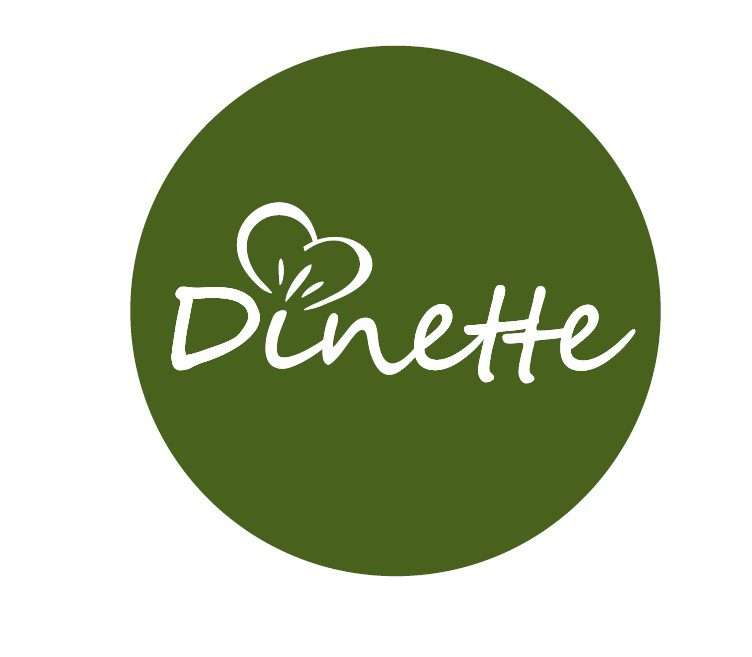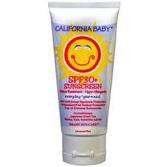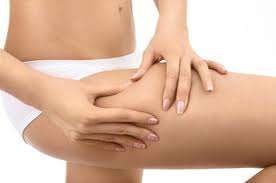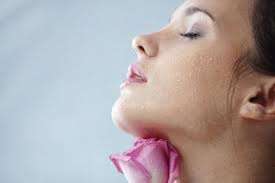Acne

Definition
Acne is a common skin disease characterized by pimples on the face, chest, and back. It occurs when the pores of the skin become clogged with oil, dead skin cells, and bacteria.
Description
Acne vulgaris, the medical term for common acne, is the most common skin disease. It affects nearly 17 million people in the United States. While acne can arise at any age, it usually begins at puberty and worsens during adolescence. Nearly 85% of people develop acne at some time between the ages of 12-25 years. Up to 20% of women develop mild acne. It is also found in some newborns.
The sebaceous glands lie just beneath the skin’s surface. They produce an oil called sebum, the skin’s natural moisturizer. These glands and the hair follicles within which they are found are called sebaceous follicles. These follicles open onto the skin through pores. At puberty, increased levels of androgens (male hormones) cause the glands to produce too much sebum. When excess sebum combines with dead, sticky skin cells, a hard plug, or comedo, forms that blocks the pore. Mild noninflammatory acne consists of the two types of comedones, whiteheads and blackheads.
Moderate and severe inflammatory types of acne result after the plugged follicle is invaded by Propionibacterium acnes, a bacteria that normally lives on the skin. A pimple forms when the damaged follicle weakens and bursts open, releasing sebum, bacteria, and skin and white blood cells into the surrounding tissues. Inflamed pimples near the skin’s surface are called papules; when deeper, they are called pustules. The most severe type of acne consists of cysts (closed sacs) and nodules (hard swellings). Scarring occurs when new skin cells are laid down to replace damaged cells.
The most common sites of acne are the face, chest, shoulders, and back since these are the parts of the body where the most sebaceous follicles are found.
Causes and symptoms
The exact cause of acne is unknown. Several risk factors have been identified:
Age. Due to the hormonal changes they experience, teenagers are more likely to develop acne.
Gender. Boys have more severe acne and develop it more often than girls.
Disease. Hormonal disorders can complicate acne in girls.
Heredity. Individuals with a family history of acne have greater susceptibility to the disease.
Hormonal changes. Acne can flare up before menstruation, during pregnancy, and menopause.
Diet. No foods cause acne, but certain foods may cause flare-ups.
Drugs. Acne can be a side effect of drugs including tranquilizers, antidepressants, antibiotics, oral contraceptives, and anabolic steroids.
Personal hygiene. Abrasive soaps, hard scrubbing, or picking at pimples will make them worse.
Cosmetics. Oil-based makeup and hair sprays worsen acne.
Environment. Exposure to oils and greases, polluted air, and sweating in hot weather aggravate acne.
Stress. Emotional stress may contribute to acne.
Acne is usually not conspicuous, although inflamed lesions may cause pain, tenderness, itching, or swelling. The most troubling aspects of these lesions are the negative cosmetic effects and potential for scarring. Some people, especially teenagers, become emotionally upset about their condition, and have problems forming relationships or keeping jobs.
Diagnosis
Acne patients are often treated by family doctors. Complicated cases are referred to a dermatologist, a skin disease specialist, or an endocrinologist, a specialist who treats diseases of the body’s endocrine (hormones and glands) system.
Key terms
Androgens — Male sex hormones that are linked with the development of acne.
Antiandrogens — Drugs that inhibit the production of androgens.
Antibiotics — Medicines that kill bacteria.
Comedo — A hard plug composed of sebum and dead skin cells. The mildest type of acne.
Comedolytic — Drugs that break up comedones and open clogged pores.
Corticosteroids — A group of hormones produced by the adrenal glands with different functions, including regulation of fluid balance, androgen activity, and reaction to inflammation.
Estrogens — Hormones produced by the ovaries, the female sex glands.
Isotretinoin — A drug that decreases sebum production and dries up acne pimples.
Sebaceous follicles — A structure found within the skin that houses the oil-producing glands and hair follicles, where pimples form.
Sebum — An oily skin moisturizer produced by sebaceous glands.
Tretinoin — A drug that works by increasing the turnover (death and replacement) of skin cells.
Acne has a characteristic appearance and is not difficult to diagnose. The doctor takes a complete medical history, including questions about skin care, diet, factors causing flare-ups, medication use, and prior treatment. Physical examination includes the face, upper neck, chest, shoulders, back, and other affected areas. Under good lighting, the doctor determines what types and how many blemishes are present, whether they are inflamed, whether they are deep or superficial, and whether there is scarring or skin discoloration.
In teenagers, acne is often found on the forehead, nose, and chin. As people get older, acne tends to appear towards the outer part of the face. Adult women may have acne on their chins and around their mouths. The elderly may develop whiteheads and blackheads on the upper cheeks and skin around the eyes.
Laboratory tests are not done unless the patient appears to have a hormonal disorder or other medical problem. In this case, blood analyses or other tests may be ordered. Most insurance plans cover the costs of diagnosing and treating acne.
Treatment
Acne treatment consists of reducing sebum production, removing dead skin cells, and killing bacteria with topical drugs and oral medications. Treatment choice depends upon whether the acne is mild, moderate, or severe.
Drugs
TOPICAL DRUGS. Treatment for mild noninflammatory acne consists of reducing the formation of new comedones with topical tretinoin, benzoyl peroxide, adapalene, or salicylic acid. Tretinoin is especially effective because it increases turnover (death and replacement) of skin cells. When complicated by inflammation, topical antibiotics may be added to the treatment regimen. Improvement is usually seen in two to four weeks.
Topical medications are available as cream, gel, lotion, or pad preparations of varying strengths. They include antibiotics (agents that kill bacteria), such as erythromycin, clindamycin (Cleocin-T), and meclocycline (Meclan); comedolytics (agents that loosen hard plugs and open pores) such as the vitamin A acid tretinoin (Retin-A), salicylic acid, adapalene (Differin), resorcinol, and sulfur. Drugs that act as both comedolytics and antibiotics, such as benzoyl peroxide, azelaic acid (Azelex), or benzoyl peroxide plus erythromycin (Benzamycin), are also used. These drugs may be used for months to years to achieve disease control.
After washing with mild soap, the drugs are applied alone or in combination, once or twice a day over the entire affected area of skin. Possible side effects include mild redness, peeling, irritation, dryness, and an increased sensitivity to sunlight that requires use of a sunscreen.
ORAL DRUGS. Oral antibiotics are taken daily for two to four months. The drugs used include tetracycline, erythromycin, minocycline (Minocin), doxycycline, clindamycin (Cleocin), and trimethoprim-sulfamethoxazole (Bactrim, Septra). Possible side effects include allergic reactions, stomach upset, vaginal yeast infections, dizziness, and tooth discoloration.
The goal of treating moderate acne is to decrease inflammation and prevent new comedone formation. One effective treatment is topical tretinoin along with a topical or oral antibiotic. A combination of topical benzoyl peroxide and erythromycin is also very effective. Improvement is normally seen within four to six weeks, but treatment is maintained for at least two to four months.
A drug reserved for the treatment of severe acne, oral isotretinoin (Accutane), reduces sebum production and cell stickiness. It is the treatment of choice for severe acne with cysts and nodules, and is used with or without topical or oral antibiotics. Taken for four to five months, it provides long-term disease control in up to 60% of patients. If the acne reappears, another course of isotretinoin may be needed by about 20% of patients, while another 20% may do well with topical drugs or oral antibiotics. Side effects include temporary worsening of the acne, dry skin, nosebleeds, vision disorders, and elevated liver enzymes, blood fats and cholesterol. This drug must not be taken during pregnancy since it causes birth defects.
Anti-androgens, drugs that inhibit androgen production, are used to treat women who are unresponsive to other therapies. Certain types of oral contraceptives (for example, Ortho-Tri-Cyclen) and female sex hormones (estrogens) reduce hormone activity in the ovaries. Other drugs, for example, spironolactone and corticosteroids, reduce hormone activity in the adrenal glands. Improvement may take up to four months.
Oral corticosteroids, or anti-inflammatory drugs, are the treatment of choice for an extremely severe, but rare type of destructive inflammatory acne called acne fulminans, found mostly in adolescent males. Acne conglobata, a more common form of severe inflammation, is characterized by numerous, deep, inflammatory nodules that heal with scarring. It is treated with oral isotretinoin and corticosteroids.
Other treatments
Several surgical or medical treatments are available to alleviate acne or the resulting scars:
Comedone extraction. The comedo is removed from the pore with a special tool.
Chemical peels. Glycolic acid is applied to peel off the top layer of skin to reduce scarring.
Dermabrasion. The affected skin is frozen with a chemical spray, and removed by brushing or planing.
Punch grafting. Deep scars are excised and the area repaired with small skin grafts.
Intralesional injection. Corticosteroids are injected directly into inflamed pimples.
Collagen injection. Shallow scars are elevated by collagen (protein) injections.
Alternative treatment
Alternative treatments for acne focus on proper cleansing to keep the skin oil-free; eating a well-balanced diet high in fiber, zinc, and raw foods; and avoiding alcohol, dairy products, smoking, caffeine, sugar, processed foods, and foods high in iodine, such as salt. Supplementation with herbs such as burdock root (Arctium lappa), red clover (Trifolium pratense), and milk thistle (Silybum marianum), and with nutrients such as essential fatty acids, vitamin B complex, zinc, vitamin A, and chromium is also recommended. Chinese herbal remedies used for acne include cnidium seed (Cnidium monnieri) and honeysuckle flower (Lonicera japonica). Wholistic physicians or nutritionists can recommend the proper amounts of these herbs.
Prognosis
Acne is not curable, although long-term control is achieved in up to 60% of patients treated with isotretinoin. It can be controlled by proper treatment, with improvement taking two or more months. Acne tends to reappear when treatment stops, but spontaneously improves over time. Inflammatory acne may leave scars that require further treatment.
Prevention
There are no sure ways to prevent acne, but the following steps may be taken to minimize flare-ups:
gentle washing of affected areas once or twice every day
avoid abrasive cleansers
use noncomedogenic makeup and moisturizers
shampoo often and wear hair off face
eat a well-balanced diet, avoiding foods that trigger flare-ups
unless told otherwise, give dry pimples a limited amount of sun exposure
do not pick or squeeze blemishes
reduce stress
Resources
Periodicals
Billings, Laura. “Getting Clear.” Health Magazine (April 1997): 48-52.
Organizations
American Academy of Dermatology. 930 N. Meacham Road, P.O. Box 4014, Schaumburg, IL 60168-4014. (847) 330-0230. Fax: (847) 330-0050. http://www.aad.org.
Gale Encyclopedia of Medicine. Copyright 2008 The Gale Group, Inc. All rights reserved.
thefreedictionary.com/







